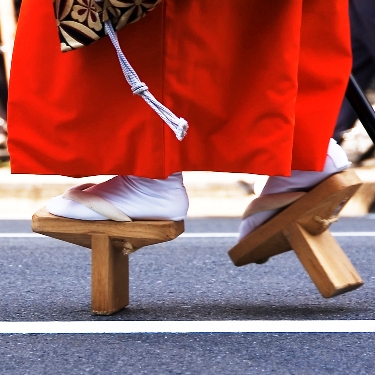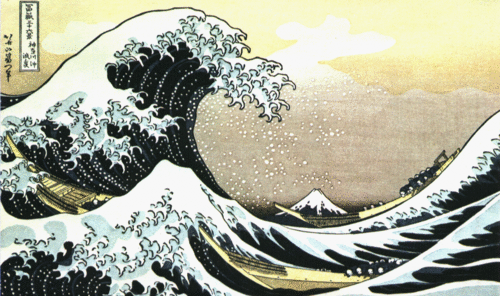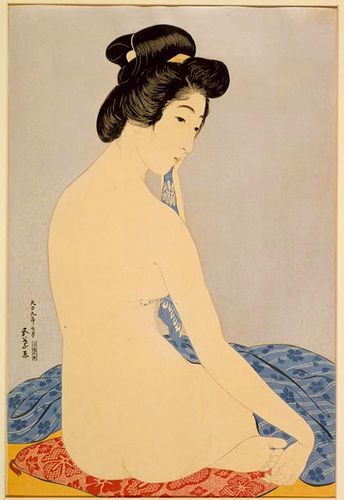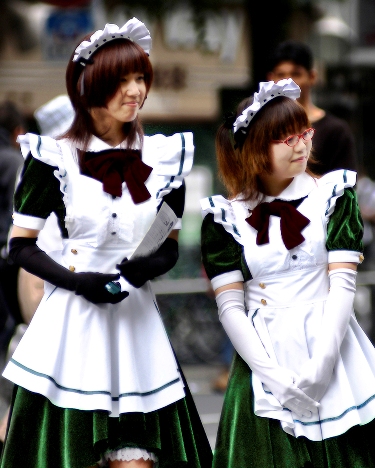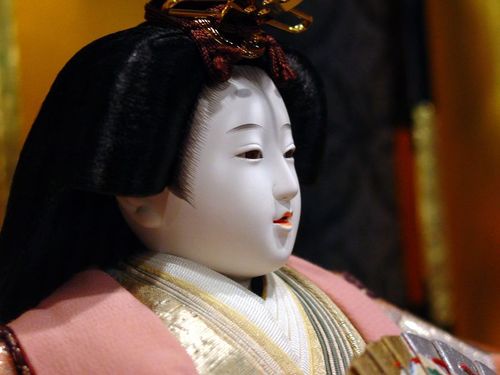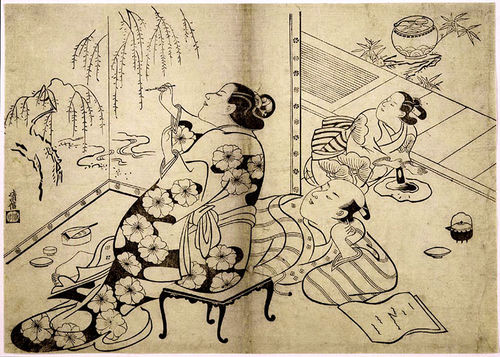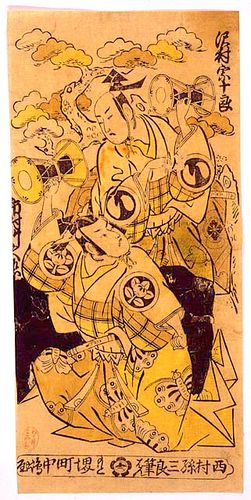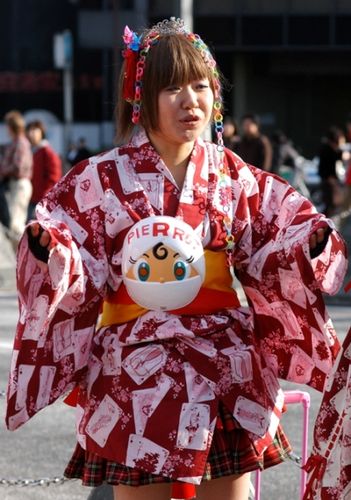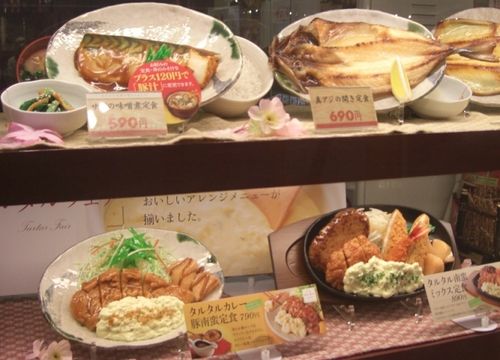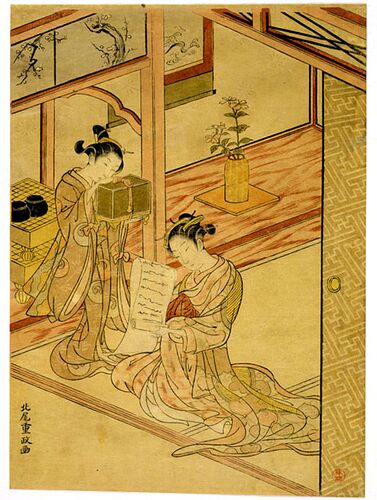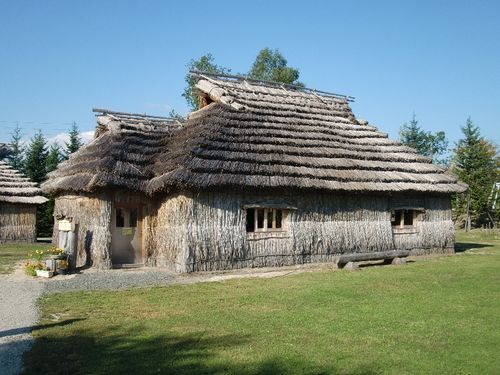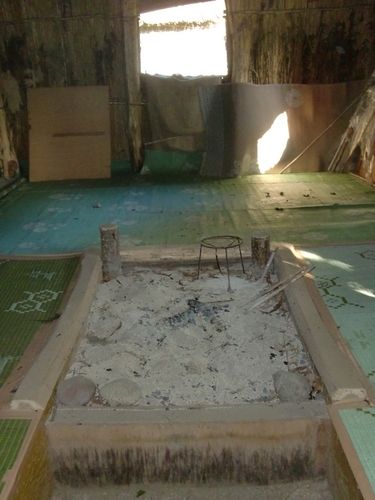Culture of Japan/Gallery: Difference between revisions
Jump to navigation
Jump to search

imported>John Stephenson (more) |
imported>John Stephenson mNo edit summary |
||
| (One intermediate revision by the same user not shown) | |||
| Line 3: | Line 3: | ||
{{Gallery-mixed | {{Gallery-mixed | ||
|caption=Culture of Japan gallery | |caption=Culture of Japan gallery | ||
|width= | |width=500 | ||
|lines=5 | |lines=5 | ||
|tengu-geta.jpg|''Tengu-[[geta]]'' shoes may be worn in traditional festivals.<BR><small>Photo © by Sonny Santos, used by [[Image_talk:tengu-geta.jpg/Permission|permission]].</small> | |tengu-geta.jpg|''Tengu-[[geta]]'' shoes may be worn in traditional festivals.<BR><small>Photo © by Sonny Santos, used by [[Image_talk:tengu-geta.jpg/Permission|permission]].</small> | ||
|Hokusai-Wave.gif| | |Hokusai-Wave.gif|神奈川沖浪裏 ''Kanagawa Oki Nami Ura'' ('The Great Wave off [[Kanagawa prefecture|Kanagawa]]', 1830s) by [[Hokusai]] (葛飾北斎 ''Katsushika Hokusai'') is possibly the most famous Japanese [[ukiyo-e|woodblock print]]. | ||
|Woman after bath.jpg| | |Woman after bath.jpg|浴後の女 ''Yokugo no Onna'' ('Woman after a bath'); woodblock print by [[Goyo Hashiguchi]] (橋口五葉 ''Hashiguchi Goyou''), 1920. | ||
|AKIBA_Scenario.jpg|Promoting a ''maid-kissa'' (メイド喫茶 ''meido-kissa'', 'maid coffee shop') in [[Akihabara]], [[Tokyo]] will involve looking the part; young women in maidlike waitresses' outfits are a common sight in this [[electronics]] quarter of the city.<BR><small>Photo © by Sonny Santos, used by [[Image_talk:AKIBA_Scenario.jpg/Permission|permission]].</small> | |AKIBA_Scenario.jpg|Promoting a ''maid-kissa'' (メイド喫茶 ''meido-kissa'', 'maid coffee shop') in [[Akihabara]], [[Tokyo]] will involve looking the part; young women in maidlike waitresses' outfits are a common sight in this [[electronics]] quarter of the city.<BR><small>Photo © by Sonny Santos, used by [[Image_talk:AKIBA_Scenario.jpg/Permission|permission]].</small> | ||
|Japanese-doll.jpg|A traditional Japanese [[doll]]. | |Japanese-doll.jpg|A traditional Japanese [[doll]]. | ||
|Courtesan painting a screen.jpg| | |Courtesan painting a screen.jpg|'Courtesan painting a screen'; woodblock print by [[Kiyonobu Torii]] ((鳥居清信 ''Torii Kiyonobu''), 18th century. | ||
|Himeji Castle.jpg|[[Himeji Castle]] is a UNESCO [[World Heritage site]]; its defences and gardens showcase two sides of Japan's history and culture. | |Himeji Castle.jpg|[[Himeji Castle]] is a UNESCO [[World Heritage site]]; its defences and gardens showcase two sides of Japan's history and culture. | ||
|United_in_different_colors.jpg|'[[Cosplay|Cosplayers]]' (from コスプレ ''kosupure'' 'costume roleplay') - teenagers who dress as characters from [[film]], [[television]] or ''[[animé]]'' cartoons - pose for the cameras in [[Harajuku]], [[Tokyo]]. These girls are dressed as members of the Japanese band 'Dir en grey'.<BR><small>Photo © by Sonny Santos, used by [[Image_talk:Menu.jpg/Permission|permission]].</small> | |United_in_different_colors.jpg|'[[Cosplay|Cosplayers]]' (from コスプレ ''kosupure'' 'costume roleplay') - teenagers who dress as characters from [[film]], [[television]] or ''[[animé]]'' cartoons - pose for the cameras in [[Harajuku]], [[Tokyo]]. These girls are dressed as members of the Japanese band 'Dir en grey'.<BR><small>Photo © by Sonny Santos, used by [[Image_talk:Menu.jpg/Permission|permission]].</small> | ||
|Kabuki dancers.jpg| | |Kabuki dancers.jpg|Sojuro Sawamura and Takenojo Ichimura dancing with a ''tsuzumi'' drum; woodblock print by [[Shigenaga Nishimura]], pre-1756. | ||
|Harajuku_Up_&_Close.jpg|Traditional and modern meet on the streets of [[Harajuku]], [[Tokyo]].<BR><small>Photo © by Sonny Santos, used by [[Image_talk:Menu.jpg/Permission|permission]].</small> | |Harajuku_Up_&_Close.jpg|Traditional and modern meet on the streets of [[Harajuku]], [[Tokyo]].<BR><small>Photo © by Sonny Santos, used by [[Image_talk:Menu.jpg/Permission|permission]].</small> | ||
|Golden Pavilion, Kyoto.JPG|''Kinkaku-ji'' (金閣寺 or 'Golden Pavilion') is a Zen temple in Kyoto. | |Golden Pavilion, Kyoto.JPG|''Kinkaku-ji'' (金閣寺 or 'Golden Pavilion') is a Zen temple in Kyoto. | ||
|Japanese-restaurant-window.jpg|Japanese restaurants often display plastic replicas of many dishes, so diners can see exactly what to expect. | |Japanese-restaurant-window.jpg|Japanese restaurants often display plastic replicas of many dishes, so diners can see exactly what to expect. | ||
|Girl with Insect Cage.jpg| | |Girl with Insect Cage.jpg|Colour woodblock print; [[Shigemasa Kitao]], pre-1820. | ||
|Ainu-cise-outside.jpg|The [[Ainu people]] are native to northern Japan. A ''cise'' is a traditional Ainu dwelling, with a thatched roof and entranceway separate from the main interior space. These replicas can be seen at [[Nibutani]], an Ainu-majority village in [[Hokkaido]]. | |Ainu-cise-outside.jpg|The [[Ainu people]] are native to northern Japan. A ''cise'' is a traditional Ainu dwelling, with a thatched roof and entranceway separate from the main interior space. These replicas can be seen at [[Nibutani]], an Ainu-majority village in [[Hokkaido]]. | ||
|Ainu-cise-inside.jpg|The interior of this replica Ainu dwelling shows where food was prepared. In the background is a special opening that acted as a separate entrance for Ainu spirits. | |Ainu-cise-inside.jpg|The interior of this replica Ainu dwelling shows where food was prepared. In the background is a special opening that acted as a separate entrance for Ainu spirits. | ||
Latest revision as of 23:57, 31 January 2012
| Culture of Japan gallery | |||||||||||||||||||||||||||||||||||||||||||||
| |||||||||||||||||||||||||||||||||||||||||||||
- Return to Culture of Japan
